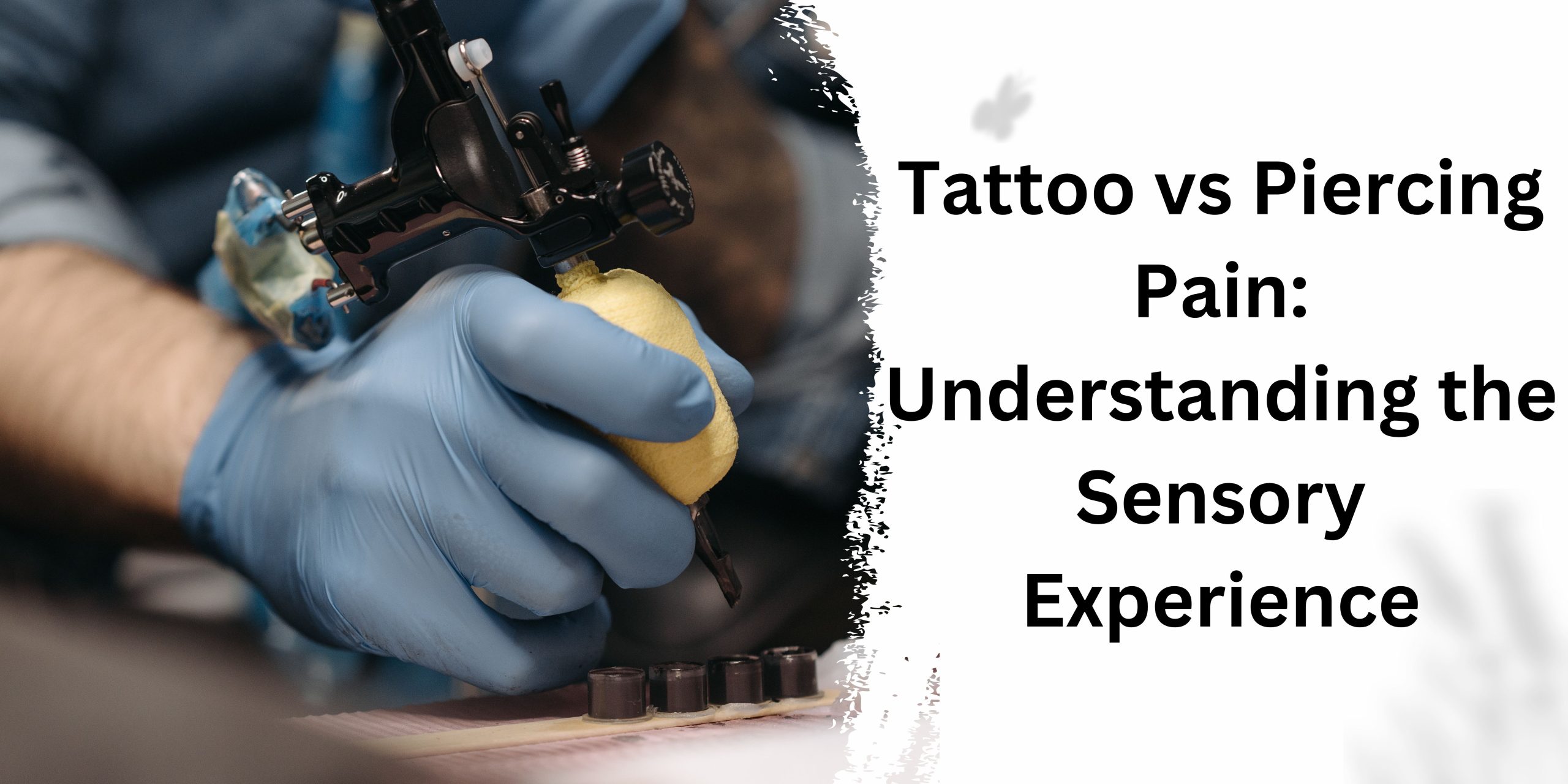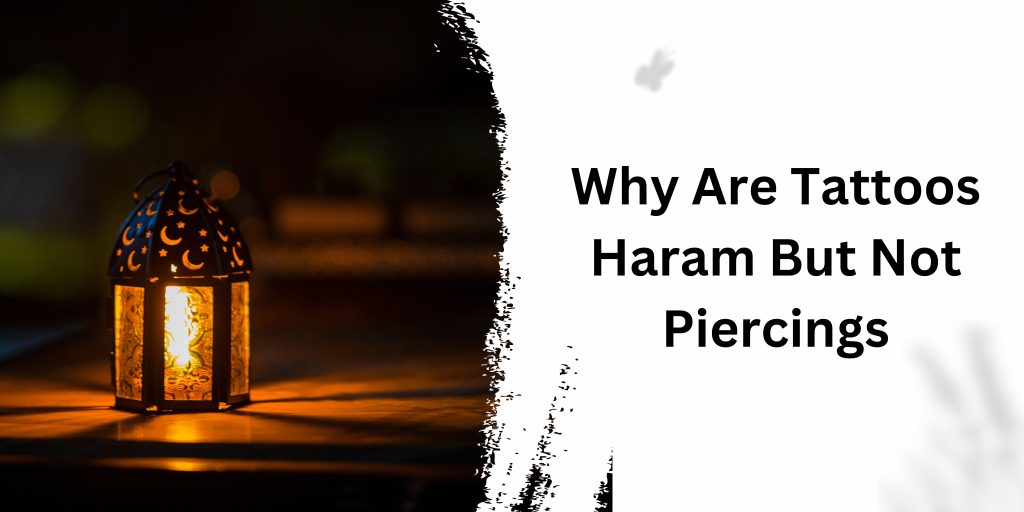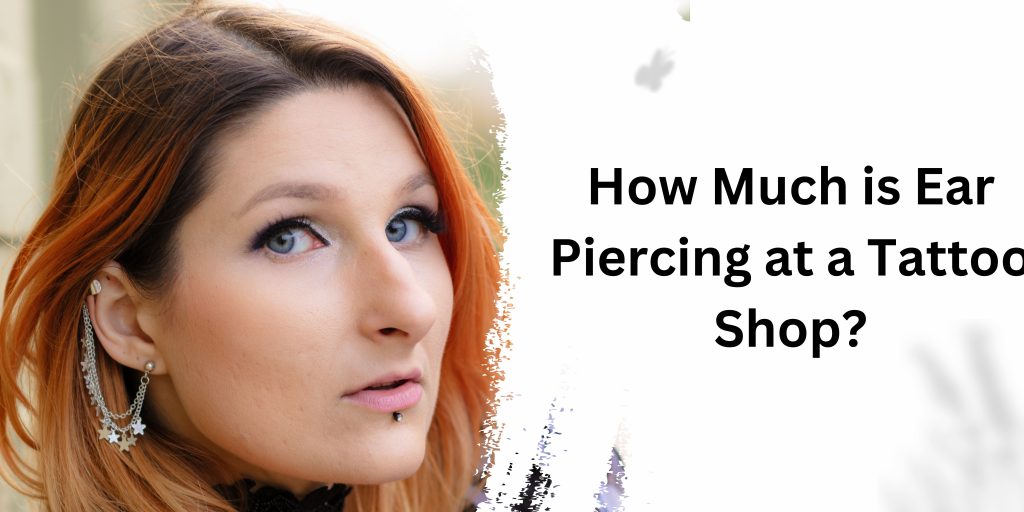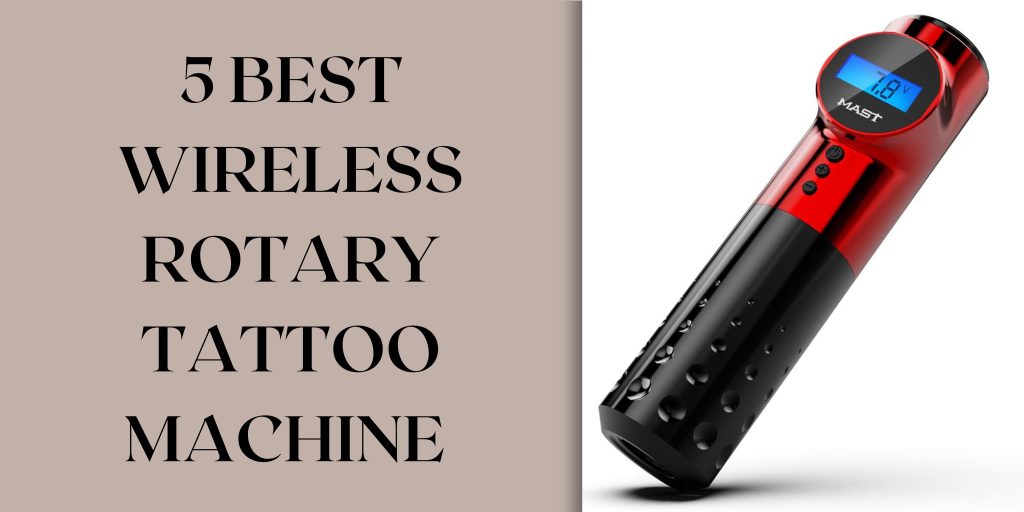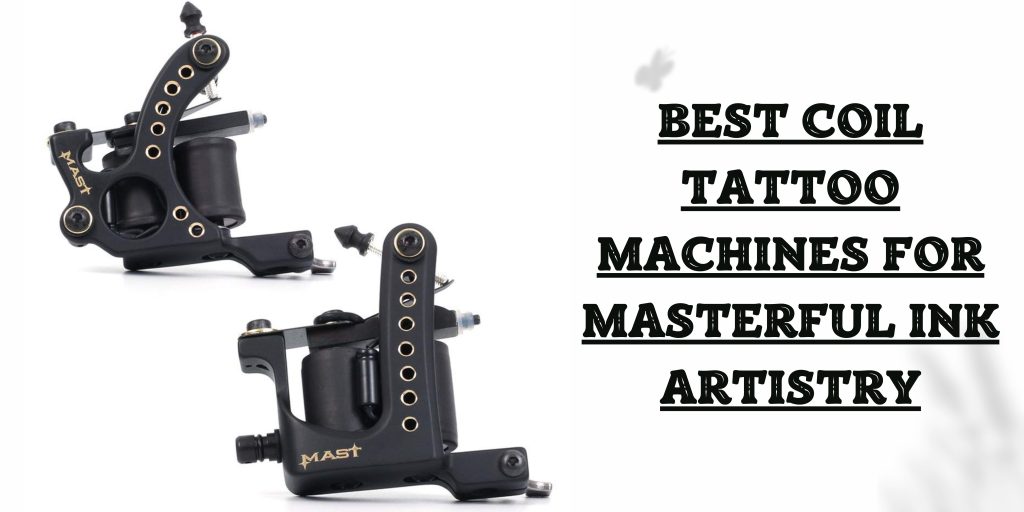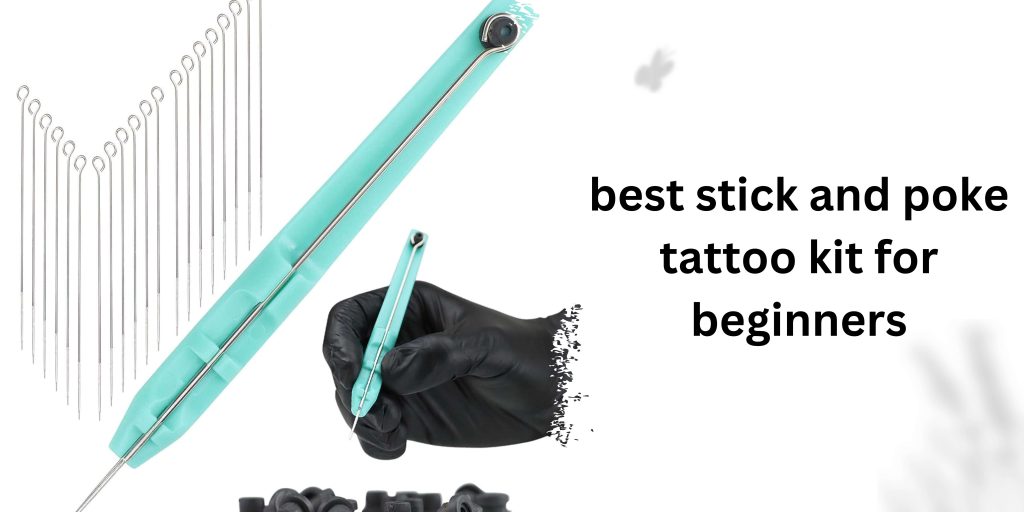In the world of body art, tattoos and piercings are two popular forms of self-expression. While both allow individuals to adorn their bodies with unique designs, one significant consideration that often arises is the level of pain associated with these processes. In this comprehensive guide, we will delve deep into the realms of tattoo vs piercing pain. We’ll explore the sensory experiences, and factors influencing discomfort, and provide practical insights for managing pain. Whether you’re a seasoned body art enthusiast or contemplating your first ink or piercing, this article will help you make informed decisions about your body art journey.
Understanding Tattoo Pain
The Tattooing Process
Tattoos involve the use of specialized machines equipped with needles that penetrate the skin to deposit ink. The sensation can be described as a series of tiny, repetitive pricks.
Tattoo Machine and Needle
The tattoo machine operates by rapidly moving a cluster of needles up and down, creating small punctures in the skin. The type of needle used can impact the level of pain experienced.
The Role of Ink
Tattoo ink plays a crucial role in the pain equation. Thicker and more concentrated inks may require multiple passes through the skin, potentially leading to increased discomfort.
| Aspect | Tattoo Pain | Piercing Pain |
|---|---|---|
| Process | Needle punctures the skin to deposit ink | Location, jewellery type, professional skill |
| Sensation | Tiny, repetitive pricks | Brief, intense pinch |
| Factors Influencing Pain | Location, size, ink type, personal pain threshold | Location, jewelry type, professional skill |
| Duration | Longer sessions due to continuous needle movement | Momentary pain during the piercing |
| Pain Intensity | Combines sharp and dull sensations | Initial sharp pain followed by a dull throb |
| Pain Threshold | Varies among individuals | Varies among individuals |
| Endorphin Release | May lead to an endorphin rush | Less likely to trigger an endorphin response |
Factors Influencing Tattoo Pain
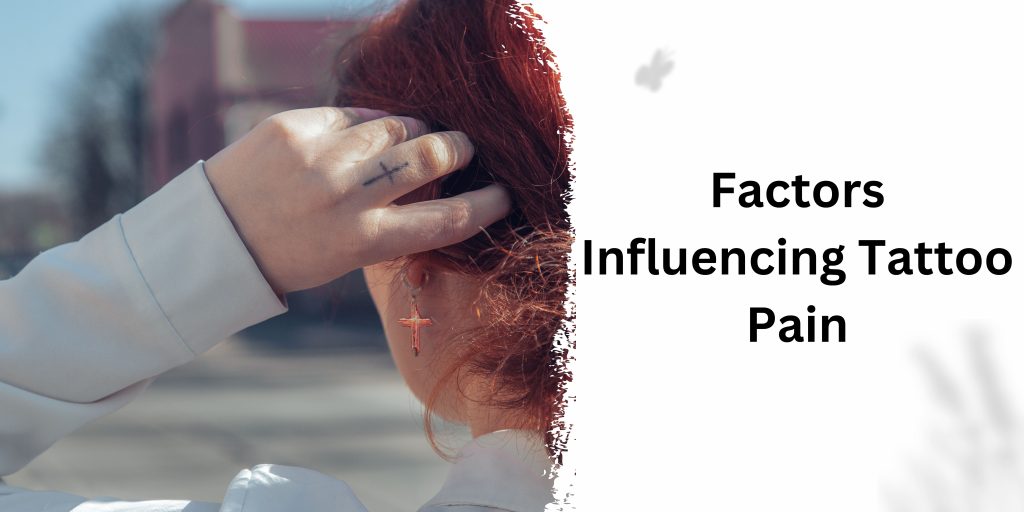
Several factors influence the level of pain experienced during a tattoo session:
Location on the Body
Tattoo placement significantly affects the pain level. Some areas, like the forearm or calf, are known to be less painful, while others, like the ribs or the sternum, can be particularly sensitive.
Size and Complexity of the Design
Larger and more intricate designs often require longer sessions, increasing the overall pain duration. Moreover, detailed work may involve shading or colouring, which can be more uncomfortable than simple outlines.
Personal Pain Threshold
Each individual has a unique pain threshold. Factors such as genetics, prior pain experiences, and mental preparedness contribute to how one perceives tattoo pain.
| Aspect | Tattoo Pain | Piercing Pain |
|---|---|---|
| Process | Involves continuous needle movement creating a tattoo design | Initial sharp pain followed by a dull throb varies by piercing location |
| Duration of Pain | Lasts throughout the tattoo session, which can be several hours | Lasts briefly during the piercing process |
| Pain Intensity | Combines sharp and dull sensations, varies by location | Location, jewellery type, professional’s skill, individual pain threshold |
| Factors Influencing Pain | Location, size, ink type, individual pain threshold | Location, jewelry type, professional’s skill, individual pain threshold |
| Pain Threshold Variability | Varies widely among individuals | Varies widely among individuals |
| Pain Management | Techniques like deep breathing and distraction can help | Techniques like deep breathing and relaxation can help |
| Healing Discomfort | Minimal discomfort during healing | Discomfort during the healing period varies by piercing type |
Experiencing Tattoo Pain
Sharp vs. Dull Pain
Tattoo pain is often described as a combination of sharp and dull sensations. The initial prick of the needle is sharp, while the ongoing sensation can feel more like a continuous burning or stinging.
The Endorphin Rush
Interestingly, during a tattoo session, your body may release endorphins, natural painkillers that can create a sense of euphoria and help mitigate the discomfort.
The Piercing Experience
Piercings involve creating a hole in the skin or cartilage to insert jewellery. The sensation is generally a brief, intense pinch.
Different Types of Piercings
There are numerous types of piercings, each with its own unique pain profile. Common options include:
Ear Piercings:
Earlobe and cartilage piercings are among the most popular and typically less painful options.
Facial Piercings:
Nose, lip, and eyebrow piercings may cause moderate discomfort due to the presence of more nerve endings in these areas.
Body Piercings:
Navel, nipple, and genital piercings can be more painful due to the density of nerve endings and thicker tissue.
The Piercing Process
Sterilization and Marking
Before the actual piercing, a piercer will sterilize the area and mark the precise spot where the piercing will be placed. This meticulous preparation ensures a safer and less painful experience.
Piercing Techniques
The choice of piercing technique can influence the level of pain. Some techniques are quicker and may cause less discomfort, while others involve a slower, more controlled approach.
Factors Influencing Piercing Pain
Various factors can impact the level of pain experienced during and after a piercing:
Body Area
Piercing location significantly affects pain. Areas with more flesh, like the earlobe, tend to be less painful than those with less tissue, like the tongue or nipple.
Piercing Jewelry
The type of jewellery used can also play a role. Thinner, lightweight jewellery typically causes less discomfort than thicker, heavier options.
Professional Skill
The experience and skill of the piercer matter. A trained and experienced professional can perform the piercing more efficiently, reducing overall pain and the risk of complications.
Comparing Tattoo and Piercing Pain
Now that we’ve explored the sensations and factors influencing pain in tattoos and piercings, let’s make a side-by-side comparison.

Pain Duration
Tattoo Pain vs. Piercing Pain:
Tattoo pain tends to be more sustained as the process involves continuous needle penetration. In contrast, piercing pain is usually brief, lasting only for the moment the needle goes through the skin.
Pain Intensity
Individual Variability:
Both tattoo and piercing pain intensity vary greatly from person to person. Your pain threshold and sensitivity play significant roles in determining how much discomfort you’ll experience.
Pain Thresholds:
Some individuals have a higher pain threshold, allowing them to endure more extended and intense tattoo or piercing sessions with less discomfort.
Pain Management Tips
Preparing for Your Tattoo or Piercing
- Stay well-hydrated and well-rested in the days leading up to your appointment.
- Avoid alcohol and blood thinners, as they can increase bleeding and discomfort during the procedure.
During the Procedure
- Practice deep breathing exercises to help relax your body and manage pain.
- Engage in distraction techniques, such as listening to music or chatting with your artist or piercer.
Aftercare and Healing
- Follow the aftercare instructions provided by your tattoo artist or piercer meticulously.
- Keep the area clean, moisturized, and protected to promote faster healing and reduce discomfort.
FAQs About Tattoo vs Piercing Pain
Conclusion
Pain is a subjective but manageable aspect of the experience. Tattoo and piercing pain, while different in nature, can be navigated with the right mindset and preparation. Your choice of artist or piercer, along with adherence to aftercare guidelines, plays a crucial role in minimizing discomfort. Ultimately, the decision to embark on a body art journey should be driven by your passion and creativity, with pain being just one part of the fascinating world of self-expression.

